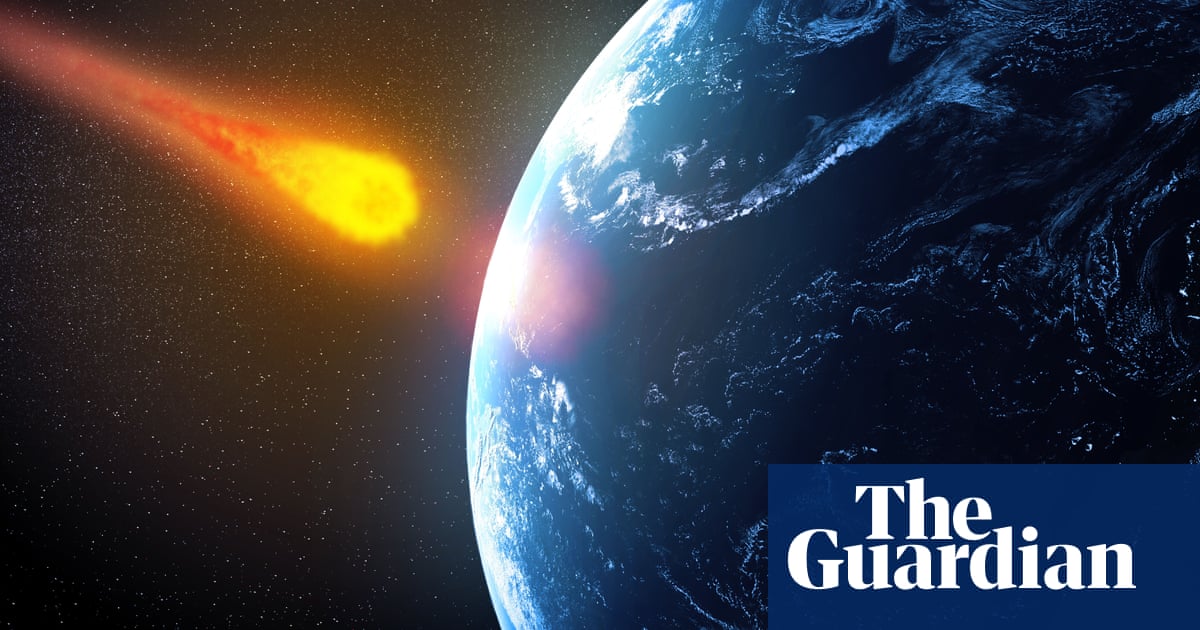Scientists, as well as Hollywood movie producers, have long looked to nuclear bombs as a promising form of defence should a massive asteroid appear without warning on a collision course with Earth.
Now, researchers at a US government facility have put the idea on a firm footing, showing how such a blast might save the world in the first comprehensive demo of nuclear-assisted planetary defence.
Physicists at Sandia National Laboratories, whose primary mission is to ensure the safety and security of the US nuclear arsenal, recorded in nanosecond detail how an immense pulse of radiation unleashed by a nuclear blast could vaporise the side of a nearby asteroid.
The event is so violent that it heats the surface to tens of thousands of degrees, producing a rapidly expanding ball of gas capable of nudging the asteroid off course. Do the sums correctly and the shunt should be sufficient to put doomsday on hold.
“The vaporised material shoots off one side, pushing the asteroid in the opposite direction,” said Dr Nathan Moore, the first author on the study. “It’s like turning the asteroid into its own rocket.”
Devastating asteroid impacts are rare in Earth’s history, but humans have learned the lesson from 66m years ago that space rocks can spell catastrophe. The asteroid that ended the reign of the dinosaurs was about 6 miles wide, but far smaller rocks are still dangerous. The 60-foot-wide meteor that exploded over the Russian city of Chelyabinsk in 2013 injured more than 1,200 people.
Given the existential nature of the threat, researchers are exploring strategies to shield Earth from massive impacts. In 2022, Nasa’s Dart probe intentionally slammed into Dimorphos, a moonlet of an asteroid called Didymos. The mission showed that a kinetic impact could protect Earth, but the nudge needed to be given years before impending impact.
The nuclear option is for larger asteroids, particularly when time is short. It does not involve shooting asteroids down, or taking Bruce Willis’s approach in the movie Armageddon of dropping a bomb down a drill hole. More effective is a standoff explosion, which vaporises part of the asteroid’s surface and leaves the rest to Newton’s third law of motion.
To test the idea, Moore and his colleagues constructed an unprecedented experiment that exposed pieces of mock asteroid to intense X-ray pulses similar to those released in nuclear blasts. The pulse first obliterates supports that hold the material in place and then swiftly vaporises the target surface, creating an expanding gas that sends it flying.
Writing in Nature Physics, the researchers describe how the mock asteroids were subject to gravity as soon as the supports were destroyed, but that they fell less than 2 millionths of a millimetre before the 20 microsecond experiment was over. The bits of mock asteroid were propelled to nearly 200mph.
The strategy should work for asteroids up to 2.5 miles wide, the scientists say, but that is not a hard upper limit. “If there is enough warning time, one can certainly deflect larger asteroids,” Moore said.
Prof Colin Snodgrass on the Dart mission science team at Edinburgh University said it was important to understand how to scale the results to full-size asteroids. The European Space Agency’s Hera mission, due to launch next month, should help by surveying the aftermath of Dart’s impact on Dimorphos.
Prof Gareth Collins, a planetary scientist at Imperial College, called Moore’s experiments “spectacular”. “I still have a strong preference for non-nuclear options, particularly single or multiple kinetic impactors, as we know they are technologically achievable,” he said. “But for a very large asteroid or a short warning time this type of approach may be our only option.”







